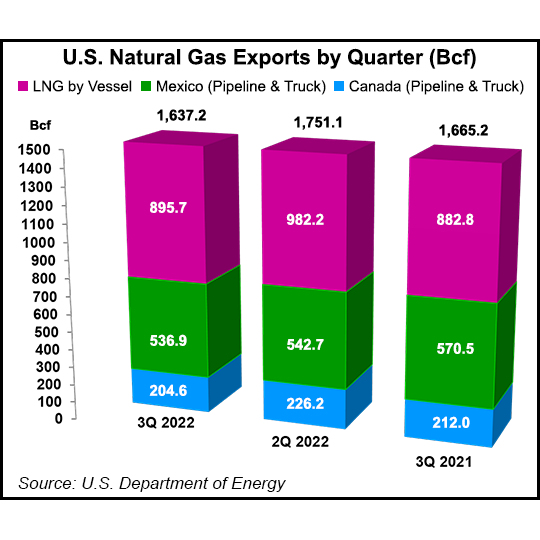Markets | NGI All News Access | NGI The Weekly Gas Market Report | Shale Daily
U.S. Natural Gas Exports to Mexico Dipped in 3Q2022, But Fetched Higher Prices, Says DOE
© 2024 Natural Gas Intelligence. All rights reserved.
ISSN © 2577-9877 | ISSN © 2577-9966 | ISSN © 1532-1266 | ISSN © 2158-8023 |



